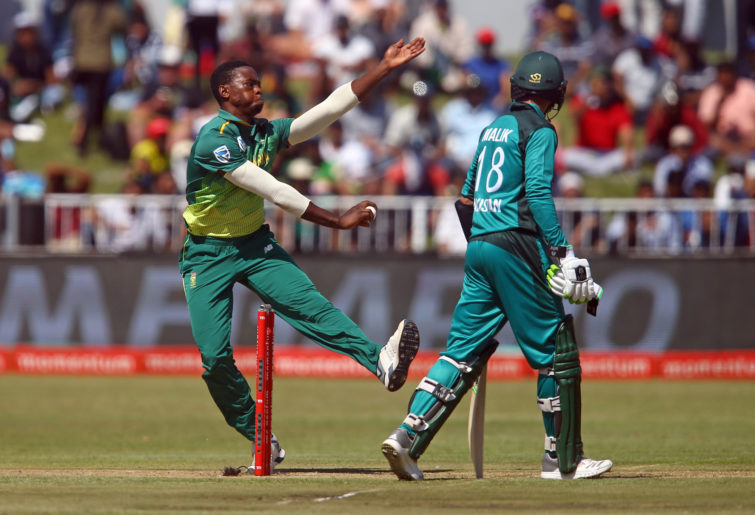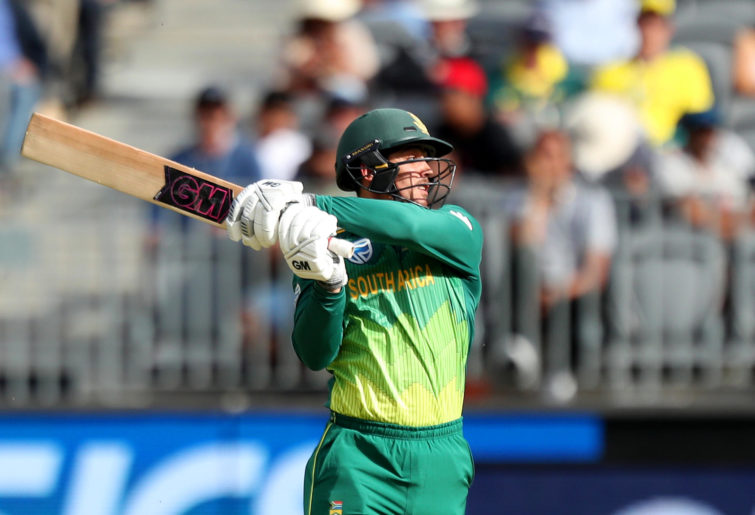'Big achievement': Jason Gillespie secures major appointment as Pakistan Test coach
Australian fast bowling great Jason Gillespie has been named head coach of Pakistan's Test team, as the nation overhauls its coaching department ahead of…
Much of the build-up to the 2019 Cricket World Cup has been consumed by the two favourites to claim the title: England and India.
Yet my outsiders tip sits with a team that possesses as much talent as the favourites, but never gains the respect it deserves. Having been perennially labelled as ‘chokers’, I believe that South Africa can win the World Cup this year. Here’s why.
1. A star-studded bowling attack
It is undeniable that South Africa possesses one of the most fearsome pace batteries in world cricket. The personnel for this tournament exemplify the quality.
Dale Steyn, in a surprising comeback from injury that had threatened to close the curtains on his illustrious career, seems to have been granted a second life as the senior statesman of the attack.
Although down on pace, Steyn still has the capacity to hurry most batsmen, and his excellent control over seam position will make him a threat in English conditions. While we didn’t see him in the warm-up fixtures, expect him to make an appearance during the tournament.
Lungi Ngidi fulfils a similar role once held by Morne Morkel. He extracts lethal bounce due to his height, and can also swing the ball when pitching up. Whilst a quality bowler in his own right, wearing pitches late in the tournament will only multiply his impact.
Then there’s the golden boy, Kagiso Rabada. Ranked fifth on the ODI bowling charts, Rabada has an incredible record in the 50-over format, and in conditions that suit fast bowling, it is inevitable that he will play a significant role if South Africa are to be successful. Swing, pace, bounce, there’s not much more to it.

Kagiso Rabada is one of South Africa’s ODI stars. (Photo by Steve Haag/Getty Images)
In the spin department, Imran Tahir has still got it. Having crossed the threshold into his forties, the Pakistan-born leggie is as threatening as he ever has been.
Coming off an excellent IPL where he topped the wicket charts, Tahir’s pace through the air and devastating googly will be effective in England, where many spinners excepting perhaps Rashid Khan will struggle with the slowness of turn in the moist conditions.
2. Versatile allrounders
The Proteas come to the World Cup equipped with some crafty allrounders who can fill the fifth or sixth bowlers roles perfectly.
Andile Phehlukwayo is most likely to start out of this bunch. A hard-hitting lower-order batsman, Phehlukwayo has delivered a few cameos in his brief international career, but has more to offer in terms of runs. With the ball, however, he has found success in his armoury of slower deliveries and his ability to nail the yorker at the death.
His four wickets in the warm-up against Sri Lanka speak to his ability to back up South Africa’s frontline attack.
Chris Morris provides explosive batting and rapid bowling, a blessing in an allrounder. While at times leaking runs with the ball, the pace he provides is an undoubtable asset.
With extensive experience in tournaments such as the IPL, he offers experience as well. However, it is his lower-order cameos with the bat where he is most valuable. Morris has a knack of hitting it into the stands, and could prove to be a useful finisher at the back end of an innings.
Dwaine Pretorius is still yet to truly blossom, but his accurate medium pace and useful batting provides yet another option for the South Africans depending on team balance.
The least explosive with the bat but perhaps the most consistent bowler of the group, Pretorius rarely bowls a bad ball and is all the more dangerous in English conditions, where medium pacers have been known to torment the opposition on the county circuit.
3. Classy batters
South Africa may be without the likes of AB de Villiers, but their current personnel have the ability to score big and score quick.

Quinton de Kock plays a cut shot. (AAP Image/Richard Wainwright)
At the top of the order, two of the world’s classiest players in Quinton de Kock and Hashim Amla have records that speak for themselves.
Amla may have looked shaky at the back end of South Africa’s domestic season, but two fifties in as many warm-up innings hint towards a fruitful tournament, while de Kock had a fairly successful IPL campaign with eventual winners Mumbai Indians.
Their backup, Aiden Markram, has yet to fire in his ODI career, but his impressive Test efforts and early season form for Hampshire bodes dangerously for opposition teams.
The middle order is no less impressive. It starts with captain Faf du Plessis, who comes into the tournament with a swathe of IPL runs and an 88 in his only warm-up innings.
Where South Africa have lost power hitting, du Plessis has improved his range and scoring areas, now able to provide that boost towards the end of an innings. David Miller has been short of runs recently but is still a clean striker at the death, and can change a game on his day.
JP Duminy is a solid middle order anchor, while newcomer Rassie van der Dussen has scored four fifties from his first eight innings in ODI cricket, looking very comfortable at the international level.
It is easy to forget that de Kock and du Plessis are ranked fifth and sixth in the world in the fifty-over format. With a highly skilled and adaptive core of batters around them, and contributions from the allrounders, the 350 threshold is well within reach if the top order fire.
When South Africa line up against England on May 30, don’t be surprised if South Africa overcome the hosts and tournament favourites.
They may not be a member of the Big Three, but the Proteas have brought a talented squad to English shores, and have the chance to go all the way if they can hit the ground running. Their World Cup fortunes have been historically slim, but 2019 could be the year that all changes.